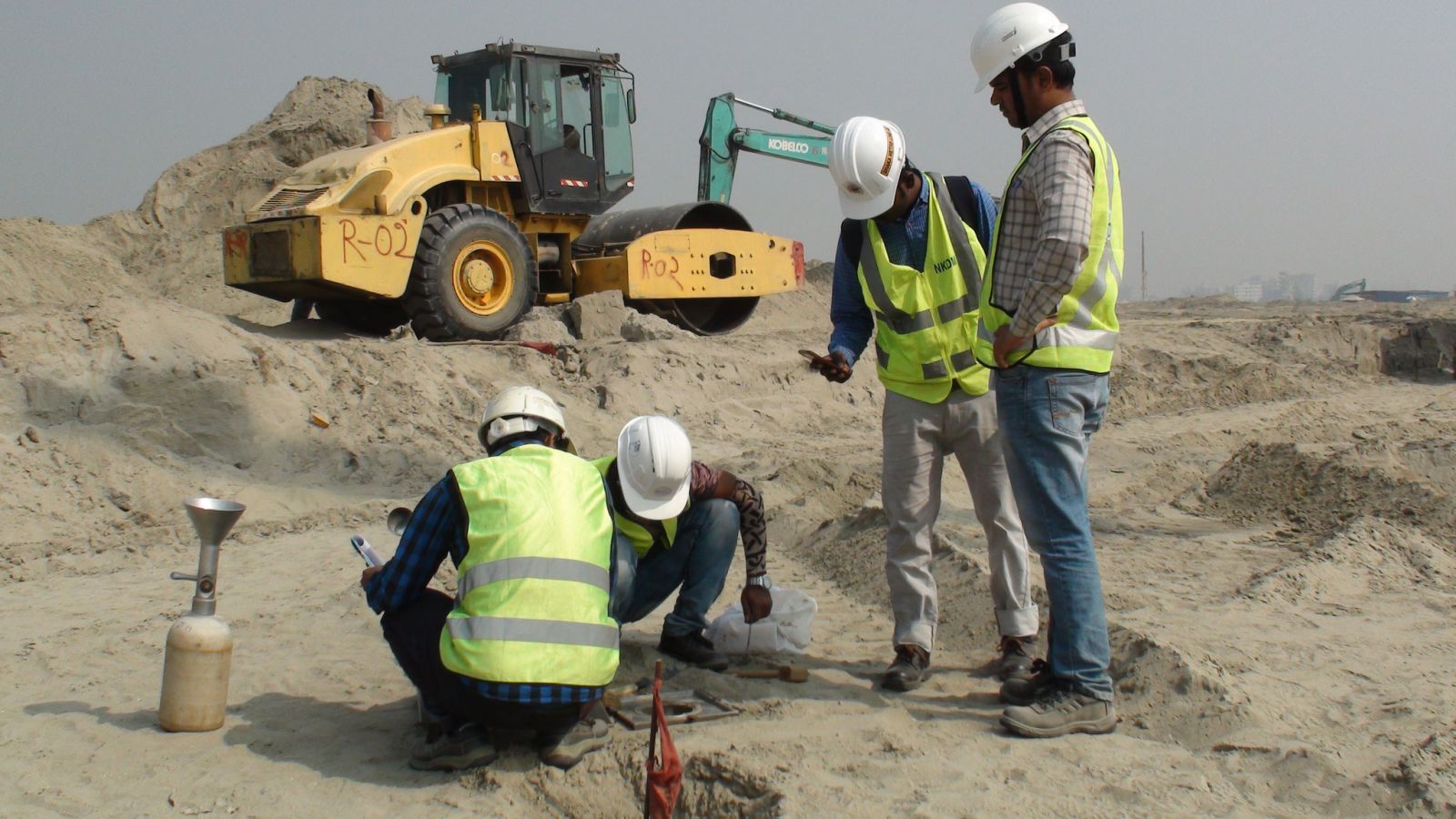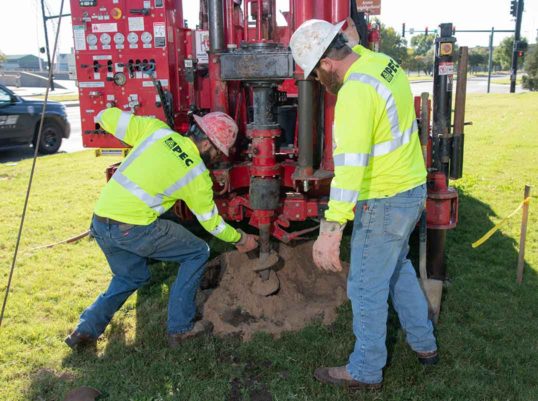The Benefits of Partnering with a Leading Consulting Engineer for Your Company Requirements
The Benefits of Partnering with a Leading Consulting Engineer for Your Company Requirements
Blog Article
Exploring the Ingenious Methods and Technologies Shaping the Future of the Geotechnical Market for Sustainable Design Solutions
The geotechnical sector is undergoing a transformative shift, driven by cutting-edge strategies and modern technologies that emphasize lasting design services. Advanced dirt stabilization approaches, making use of smart materials, and the application of data analytics are redefining exactly how we approach framework obstacles. As these developments advertise ecological stewardship, they also increase vital inquiries about their practical implementation and long-term performance. Understanding the interplay in between these innovations and their prospective to transform the field invites further exploration into the future of sustainable design practices.
Advanced Soil Stabilization Methods
Dirt stablizing is a vital process in geotechnical design, targeted at improving the physical buildings of soil to boost its load-bearing ability and sturdiness. Advanced dirt stabilization methods play a crucial duty in resolving difficulties linked with unpredictable or weak dirts, therefore allowing secure and efficient building and construction practices.
Amongst the prominent methods, chemical stablizing includes the usage of additives such as lime, cement, or fly ash, which respond with soil bits to create a more cohesive mass. This method is particularly efficient in boosting the strength and moisture resistance of expansive clay dirts. Mechanical stabilization, on the other hand, entails the physical alteration of soil residential properties via compaction or the incorporation of granular materials, causing boosted density and security.
An additional innovative technique is using geosynthetics, which provide support and decrease dirt disintegration while boosting water drainage. Strategies like dirt blending and deep dirt stabilization are likewise obtaining grip, permitting in-situ treatment of troublesome dirts. Jointly, these innovative methods not only improve the performance of dirt structures however additionally add to sustainable design methods by reducing the need for substantial excavation and product transport.
Smart Products in Geotechnics
Innovation is at the leading edge of geotechnical engineering, especially with the consolidation of wise materials that boost the efficiency and capability of soil structures. Smart products, such as form memory alloys, piezoelectric materials, and self-healing polymers, are transforming the way engineers approach dirt stablizing and infrastructure long life (geotechnical engineers). These products can adapt to altering ecological problems, react to anxiety, and even repair themselves, considerably improving the resilience of geotechnical systems
As an example, piezoelectric products can produce electric charges in response to mechanical anxiety, offering prospective for real-time tracking of dirt problems and architectural honesty. Self-healing products can autonomously fix problems and fractures, reducing upkeep prices and extending the life-span of geotechnical possessions. The integration of these wise materials not just enhances the mechanical homes of soil however additionally contributes to sustainable engineering techniques by minimizing resource intake and environmental influence.
As the geotechnical sector continues to progress, the fostering of clever materials will play a vital function in creating ingenious options, ensuring that frameworks are not just robust but also adaptable to future obstacles. This transformative approach is poised to redefine the criteria of safety and security and performance in geotechnical engineering.
Data Analytics for Infrastructure
The integration of smart products in geotechnical engineering has led the way for sophisticated methods, specifically in the realm of information analytics for infrastructure. This innovative method leverages substantial information collection and logical strategies to boost decision-making procedures throughout the framework lifecycle. By utilizing sensors embedded in smart products, engineers can continuously keep an eye on click for source vital specifications such as soil security, dampness levels, and architectural integrity.
Data analytics enables the transformation of raw information into workable understandings, enabling predictive upkeep and improved risk monitoring. Advanced formulas and artificial intelligence techniques help with the identification of patterns and anomalies, which can inform prompt interventions and maximize resource allotment. Furthermore, integrating geographic details systems (GIS) enhances spatial evaluation, additional improving the decision-making framework.
As infrastructure jobs expand in complexity, the reliance on data analytics comes to be significantly important. It cultivates a positive approach, decreasing the likelihood of failings and making certain the longevity and sustainability of structures. By harnessing the power of data analytics, the geotechnical sector is placed to not only improve existing methods but likewise pioneer innovative remedies for future framework challenges. This synergy of technology and engineering concepts will certainly specify the future of sustainable infrastructure development.

Lasting Ground Renovation Approaches
Different lasting ground renovation approaches are becoming crucial remedies to resolve the challenges of geotechnical engineering while decreasing ecological effect. These methods not only enhance soil performance but likewise advertise environmental stewardship by lowering reliance on traditional, much more invasive strategies.

One more ingenious technique is the application of geosynthetics, that includes eco-friendly products that strengthen dirt while advertising drain and disintegration control - tailings engineer. This minimizes the demand for hefty equipment and lessens site disruption, therefore preserving neighborhood ecological communities
On top of that, strategies such as vibrant compaction and vibro-replacement have progressed to consist of sustainable techniques, incorporating recycled products and minimizing carbon footprints. These approaches exemplify the market's shift in the direction of even more ecologically responsible options, making certain that ground enhancement not only fulfills design demands but also contributes positively to the surrounding setting.
Advancements in Ecological Surveillance
Over the last few years, developments in environmental tracking have actually substantially boosted the ability to examine and handle geotechnical jobs with website link marginal environmental disruption. Innovative modern technologies, such as remote noticing, Web of Things (IoT) gadgets, and real-time information analytics, are changing just how ecological impacts are measured and alleviated.
Remote picking up technologies, consisting of satellite imagery and air-borne LiDAR, facilitate the rapid analysis of land usage adjustments and ecological conditions - consulting engineer. These tools permit continuous monitoring of websites, making it possible for designers to recognize possible concerns before they escalate. Additionally, IoT gadgets, geared up with sensors for parameters like dirt gas, temperature, and dampness exhausts, offer real-time information streams that enhance the understanding of site-specific environmental variables
Real-time data analytics further improve decision-making processes by integrating information from various sources, enabling aggressive administration methods. This alternative technique not just ensures conformity with ecological laws yet additionally promotes lasting techniques within the geotechnical market.
As these developments proceed to develop, they hold the possible to connect the space between engineering goals and environmental stewardship, promoting a more lasting future for geotechnical projects worldwide.
Final Thought
Finally, the geotechnical market is undergoing a transformative development driven by cutting-edge methods and innovations that focus on sustainability. Advanced soil stablizing methods, the integration of clever materials, and the application of data analytics jointly improve the strength and efficiency of facilities. Moreover, lasting ground renovation techniques and developments in ecological tracking underscore the industry's dedication to eco-friendly stewardship. These developments not just address contemporary design obstacles but likewise lead the way for an extra sustainable future in geotechnical techniques.
Techniques like dirt blending and deep dirt stabilization are also getting traction, permitting for in-situ treatment of troublesome soils. Jointly, these sophisticated approaches not only boost the efficiency of dirt structures yet also add to sustainable design techniques by reducing the demand for substantial excavation and material transportation.

Report this page